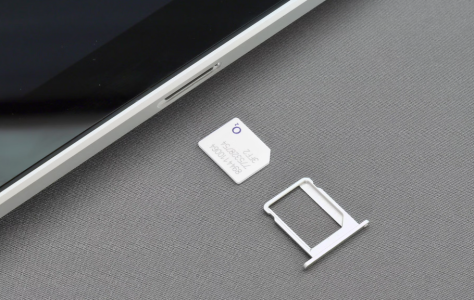End of era: Once ubiquitous Aussie item is disappearing!
By
- Replies 5
In a world where change is the only constant, Australians are witnessing the gradual disappearance of a once-commonplace item.
The evolution of technology has sparked discussions about the future of mobile connectivity, revealing a clear trend: the tiny plastic chip we’ve been fumbling with is on its way out.
As this shift unfolds, questions arise about how this transition will reshape our practical interactions with devices and our perceptions of digital security and convenience.
For decades, the SIM card has been a fundamental component of mobile phones, storing subscriber information and enabling connectivity.
However, with technological advancements, the physical SIM card is becoming obsolete, replaced by a more sophisticated and convenient solution: the eSIM.
An eSIM, or embedded SIM, is a rewritable digital SIM card built into the device.
Over the past five years, high-end phones have increasingly adopted this technology, allowing users to switch carriers or plans without physically swapping out SIM cards.
In the United States, Apple has already transitioned to eSIM-only iPhones, and the latest iPads in Australia have followed suit.
With whispers of the iPhone 16 possibly ditching the plastic SIM card in the spring, it's not a question of if but when this change will sweep the Australian market.
Mobile plans were among the easiest household expenses to compare and switch, and the plastic SIM card has been the only minor inconvenience in this process.
With eSIMs, switching providers became as simple as downloading an app or scanning a QR code, eliminating the need to visit a store or wait for a physical SIM card to arrive by post.
The telco comparison site Whistleout has noted a rapid increase in eSIM offerings, with no less than 19 providers now supporting the technology.
Many telcos offer introductory deals up to 50 per cent off for the first six months.
With an eSIM, you could easily switch providers every six months to take advantage of these offers.
However, the main drawback is limited options. For instance, only about five providers offer data-only eSIMs for new iPads.
In another mobile-related news story, a man has been charged for allegedly sending over 17 million scam texts and impersonating large businesses like Australia Post and Linkt.
Police seized two active SIM boxes at his property. Further details on the story can be found here.
 Have you switched to an eSIM yet, or are you holding onto the traditional SIM card for as long as possible? Share your thoughts and experiences with us in the comments below.
Have you switched to an eSIM yet, or are you holding onto the traditional SIM card for as long as possible? Share your thoughts and experiences with us in the comments below.
The evolution of technology has sparked discussions about the future of mobile connectivity, revealing a clear trend: the tiny plastic chip we’ve been fumbling with is on its way out.
As this shift unfolds, questions arise about how this transition will reshape our practical interactions with devices and our perceptions of digital security and convenience.
For decades, the SIM card has been a fundamental component of mobile phones, storing subscriber information and enabling connectivity.
However, with technological advancements, the physical SIM card is becoming obsolete, replaced by a more sophisticated and convenient solution: the eSIM.
An eSIM, or embedded SIM, is a rewritable digital SIM card built into the device.
Over the past five years, high-end phones have increasingly adopted this technology, allowing users to switch carriers or plans without physically swapping out SIM cards.
In the United States, Apple has already transitioned to eSIM-only iPhones, and the latest iPads in Australia have followed suit.
With whispers of the iPhone 16 possibly ditching the plastic SIM card in the spring, it's not a question of if but when this change will sweep the Australian market.
Mobile plans were among the easiest household expenses to compare and switch, and the plastic SIM card has been the only minor inconvenience in this process.
With eSIMs, switching providers became as simple as downloading an app or scanning a QR code, eliminating the need to visit a store or wait for a physical SIM card to arrive by post.
The telco comparison site Whistleout has noted a rapid increase in eSIM offerings, with no less than 19 providers now supporting the technology.
- Telstra
- Optus
- Vodafone
- Everyday Mobile
- Kogan Mobile
- amaysim
- Lebara
- felix Mobile
- Superloop
- Exetel
- TPG
- Boost Mobile
- Circles.Life
- Tangerine
- More
- SpinTel
- iiNet
- AGL
- MATE
Many telcos offer introductory deals up to 50 per cent off for the first six months.
With an eSIM, you could easily switch providers every six months to take advantage of these offers.
However, the main drawback is limited options. For instance, only about five providers offer data-only eSIMs for new iPads.
In another mobile-related news story, a man has been charged for allegedly sending over 17 million scam texts and impersonating large businesses like Australia Post and Linkt.
Police seized two active SIM boxes at his property. Further details on the story can be found here.
Key Takeaways
- Apple may potentially remove physical SIM cards in future iPhone models, following the trend of eSIM-only devices in the US and iPad models in Australia.
- eSIM technology has become more widespread, with eSIM being offered by 19 providers for mobiles, making it easier for customers to switch between carriers.
- The shift towards eSIMs can benefit consumers who take advantage of 'honeymoon deals' and wish to switch providers to save money frequently.
- While the transition to eSIM offers convenience, the current downside is the limited number of providers offer data-only eSIM plans for devices like iPads.








